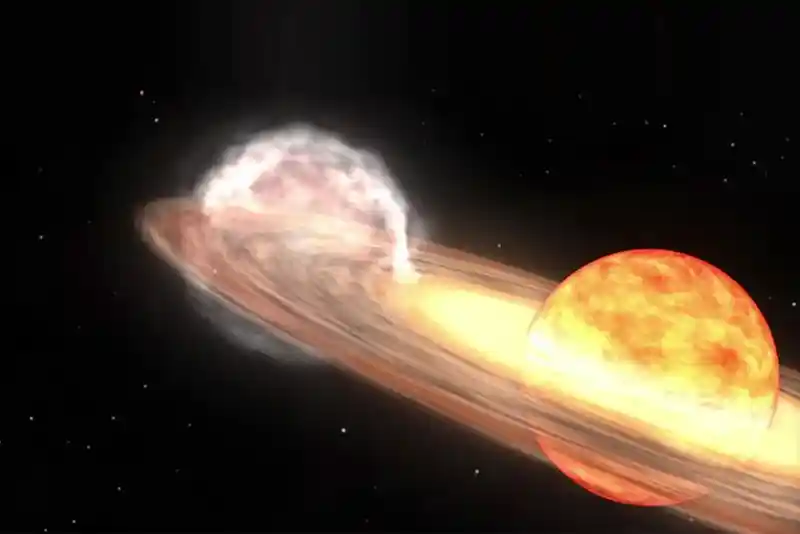
‘Blaze Star’ Explosion: How, When and Where to Watch
Astronomers and sky-gazers worldwide are eagerly awaiting a rarest of rare celestial event this summer when a star, nicknamed ‘Blaze Star’, will explode and light up our night though the space agencies are yet to confirm the exact date and time.

[A red giant star and white dwarf orbit each other in this animation of a nova similar to T Coronae Borealis. When the red giant moves behind the white dwarf, a nova explosion on the white dwarf ignites, creating a ball of ejected nova material shown in pale orange. (Image: NASA/Goddard Space Flight Center)]
Mumbai: Astronomers and sky-gazers worldwide are eagerly awaiting a rarest of rare celestial event this summer when a star, nicknamed ‘Blaze Star’, will explode and light up our night though the space agencies are yet to confirm the exact date and time.
The star expected to explode is called "T Coronae Borealis" or just “T CrB”, and is located in the star cluster called "Corona Borealis," according to NASA.
About Nova Explosion
The nova explosion was last seen around 80 years ago. A similar event has been documented since 1217 AD, with the most famous one having occurred in 1866 AD and 1946 AD, according to the International Astronomical Centre (IAC).
A nova explosion is the dramatic instance of a star exploding as it interacts with another, nearby star.
A "nova" should not be confused with a "supernova", which is titanic explosion that destroys some dying stars
There is a sequence of quick changes in the star's brightness at the time of the explosion, called a nova, Eng. Mohammad Shawkat Awdeh, Director of IAC, said.
The star will significantly increase in brightness temporarily, after which it fades. As the star explodes every few years, it is called a recurring nova.
Star Explosion 2024 Date and Time
The nova explosion 2024 will be visible all over the world, including Saudi Arabia, UAE, Qatar, the United States, United Kingdom and other countries, with naked eyes.
"The outburst will be brief. Once it erupts, it will be visible to the naked eye for a little less than a week", NASA said.
The star explosion this summer is likely to occur at any time between now and coming September, although observers say the timeline could extend beyond this point.
“Recurrent novae are unpredictable and contrarian,” said Dr. Koji Mukai, a fellow astrophysics researcher at NASA Goddard.
“When you think there can’t possibly be a reason they follow a certain set pattern, they do – and as soon as you start to rely on them repeating the same pattern, they deviate from it completely. We’ll see how T CrB behaves", he added.
Select Language To Read in Urdu, Hindi, Marathi or Arabic.

